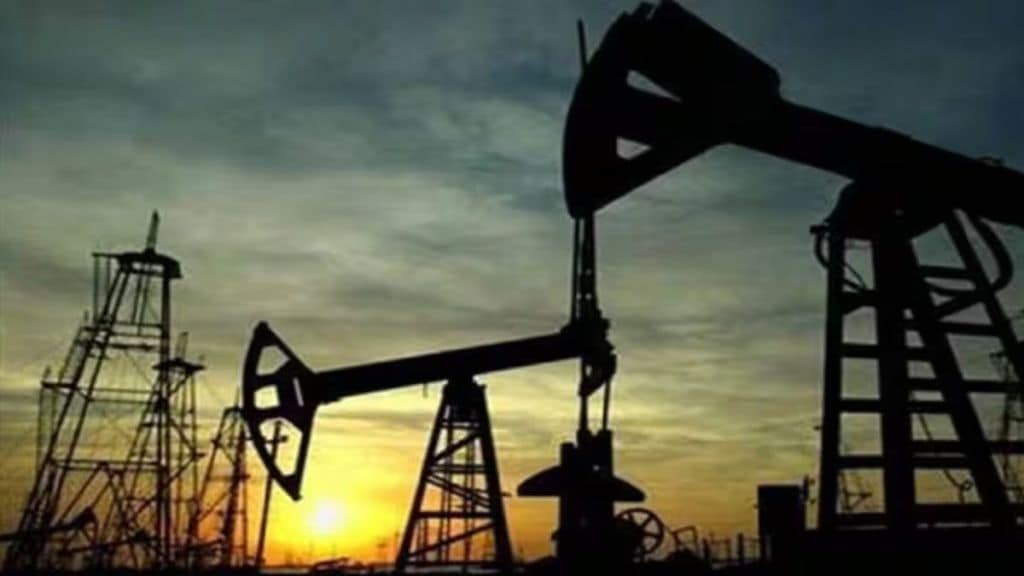For the country’s energy sector, the just-concluded fiscal year 2023-24 was marked by several challenges – rising crude oil prices amid geopolitical tensions, demand and supply disruptions, and stagnant domestic production.
As the year was about to draw to a close, the upcoming general elections, impelled the government to take a few steps that aren’t market-friendly. First came the cut in prices of LPG (liquefied petroleum gas) cylinders and then the reduction prices of auto fuels.
Starting from the Israel-Hamas conflict and then the tensions over the Red Sea that resulted in spiraling crude prices, Indian refiners found themselves in a tough spot on several occasions. Added to this have been the output cuts announced by the Organisation of Petroleum Exporting Countries and allies. Global crude prices have remained volatile, hitting the marketing margins of the country’s top oil marketing companies.
After a moderation in oil prices which allowed the OMCs to earn healthy profits in the first three quarters of FY24, offsetting the losses made previous fiscal when prices skyrocketed, a recent spurt in prices (touching $87 per barrel on Thursday) coupled with the retail fuel price cut can again pose concerns on profitability of these OMCs.
After the elections are over, the oil marketing companies may again switch back to the daily revision of auto fuel prices, analysts believe. However, rising uncertainties across the globe may keep crude oil prices volatile in the upcoming financial year as well.
“Every $1 increase in crude prices reduces marketing margins of OMCs by 30-40 paisa per litre,” said an analyst who did not wish to be identified. “Because of the price reduction and in the run up to the elections, they (OMCs) may be exposed to (rising) oil prices but once elections are over, there could also be price hikes.”
FY24 also saw a muted growth in the country’s oil and gas production with rising dependency on imports. As a result of the growing domestic demand, the country’s dependency on oil imports rose to 87.7% in the current fiscal till February against 87.2% in FY23, as per the latest data from the Petroleum Planning and Analysis Cell.
The country’s upstream oil comaniues produced 26.9 million tonnes of crude oil during the fiscal till February, up by only a marginal 0.7% from the same period last year. India’s crude oil imports for the period increased to 212.8 million tonnes from 211.8 million tonnes in the same period last fiscal, the data showed.
The country’s import bill, however, declined this financial year primarily on the back of healthy discounts that Russia, the top supplier, offers on its exports. This resulted in a drop of 17.6% in the import bill at $120.8 billion during Apr-Feb.
For the financial year starting April 1, analysts see crude oil prices in the range of $75-$95 per barrel. They also do not see any major impact on the profitability of the OMCs on the back of healthy gross refining margins. However, if crude oil prices continue to rise or remain elevated at $87-$90 per barrel, then under-recoveries could start again and stay through FY25 as in FY23, noted Prashant Vasisht, Senior Vice President and Co-Head, Corporate Ratings, Icra.
During the year, the government also came out with several reforms, especially targeted at increasing the share of gas to 16% in the energy mix by 2030 from the current share of around 6.7%. Turning its goal towards attaining a gas-based economy, the government came out with mandatory blending of compressed biogas in compressed natural gas and piped natural gas, increasing the city gas distribution network, and setting up of more LNG terminals among others.
However, the power sector has become less enthusiastic about gas-based capacity addition, due to prohibitively high costs.
LNG (liquified natural gas) imports rose to 27,933 MMSCM (million standard cubic meters) during the fiscal till February, up by 17.65 from last year. Domestic natural gas production stood at 33,299 MMSCM, up 6% from 31,494 MMSCM in Apr-Feb of FY23.
Analysts see domestic gas production picking pace and expect around 15 MMSCM per day of new domestic natural gas production to come on-stream during FY25, as per a recent note by CareEdge.
“With the rise in domestic natural gas production, India’s dependency on imported LNG, which stood at 53% of total consumption in FY21, has gradually declined over the last three years and is expected to remain at around 45% by FY26,” the report said.

